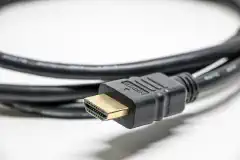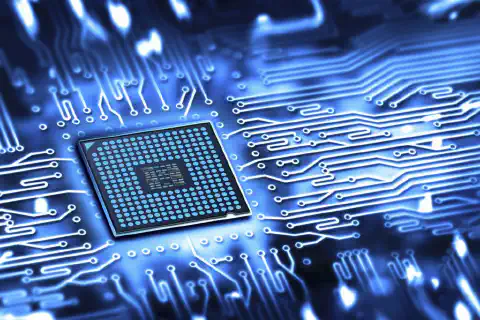Mastering Bus Architectures for Swift Data Transfers

Table of Contents
Achieving High-Speed Data Transfers: A Guide to Bus Architectures
Bus architectures play a crucial role in achieving high-speed data transfers in modern computing systems. They provide a communication pathway between different components, allowing for the efficient transfer of data. This article will provide an in-depth guide to bus architectures, covering their definition, benefits, common types, high-speed data transfer techniques, optimization strategies, emerging trends, and challenges. By the end of this article, you will have a comprehensive understanding of bus architectures and how to achieve high-speed data transfers.
Key Takeaways
- Bus architectures facilitate high-speed data transfers in computing systems.
- Parallel and serial bus architectures are two common types used for high-speed data transfer.
- Optimizing data transfer speed can be achieved through bus arbitration techniques, data compression and decompression, and error detection and correction.
- Emerging trends in bus architectures include fiber optic and wireless bus architectures, as well as integration with the Internet of Things (IoT).
- Challenges in high-speed data transfers include signal integrity issues, power consumption considerations, and security and privacy concerns.
Introduction to Bus Architectures
What is a Bus Architecture?
A bus architecture is a communication system that allows multiple devices to transfer data between each other. It consists of a set of wires or traces that connect the devices, along with protocols and standards for data transfer. Bus architectures provide a common pathway for data exchange, enabling devices to communicate and share information.
- Bus architectures facilitate the transfer of data between various components of a computer system, such as the CPU, memory, and peripherals.
- They allow for the simultaneous transfer of data between multiple devices, improving overall system performance.
- Bus architectures can be classified into different types based on their design and characteristics.
| Type | Description |
|---|---|
| Parallel Bus | Transfers multiple bits of data simultaneously using separate wires for each bit. |
| Serial Bus | Transfers data one bit at a time using a single wire. |
Tip: Parallel bus architectures are suitable for high-speed data transfers over short distances, while serial bus architectures are more efficient for long-distance communication.
Benefits of Bus Architectures
Bus architectures offer several benefits that make them a popular choice for high-speed data transfers:
- Simplicity: Bus architectures provide a simple and straightforward way to connect multiple devices and components within a system.
- Cost-effectiveness: By using a shared communication channel, bus architectures eliminate the need for individual connections between every device, reducing costs.
- Scalability: Bus architectures can easily accommodate additional devices by adding them to the bus, making it a flexible solution for expanding systems.
- Compatibility: Bus architectures are designed to be compatible with a wide range of devices, allowing for seamless integration and interoperability.
- Efficiency: With a single communication channel, bus architectures optimize data transfer efficiency by minimizing overhead and maximizing bandwidth utilization.
In summary, bus architectures offer simplicity, cost-effectiveness, scalability, compatibility, and efficiency, making them an ideal choice for high-speed data transfers.
Common Types of Bus Architectures
Bus architectures can be classified into several common types, each with its own characteristics and applications:
Parallel Bus Architecture: In this type of architecture, multiple data bits are transmitted simultaneously on separate lines. It allows for high data transfer rates but requires a larger number of wires and can be prone to signal interference.
Serial Bus Architecture: Unlike parallel bus architecture, serial bus architecture transmits data one bit at a time on a single line. It is more efficient in terms of wire usage and can achieve higher speeds over longer distances.
Shared Bus Architecture: In a shared bus architecture, multiple devices share a single bus for data transfer. This architecture requires bus arbitration techniques to manage access to the bus and prevent conflicts.
Daisy Chain Bus Architecture: In a daisy chain bus architecture, devices are connected in a linear chain, with each device connected to the next. Data is passed from one device to another in sequence.
Switched Bus Architecture: In a switched bus architecture, devices are connected to a central switch that controls the flow of data. This allows for more efficient data transfer and can support a larger number of devices.
Each type of bus architecture has its advantages and disadvantages, and the choice depends on the specific requirements of the system.
High-Speed Data Transfer Techniques
Parallel Bus Architectures
Parallel bus architectures are a type of bus architecture that allow multiple bits of data to be transferred simultaneously. They are commonly used in high-speed data transfer applications where speed is a critical factor. Parallel refers to the fact that multiple bits are transferred in parallel, meaning they are sent at the same time. This allows for faster data transfer rates compared to serial bus architectures, where bits are sent one after the other.
Parallel bus architectures offer several advantages:
- Increased data transfer speed: By transferring multiple bits simultaneously, parallel bus architectures can achieve higher data transfer rates.
- Lower latency: Since data is transferred in parallel, the latency is reduced compared to serial bus architectures.
- Simpler implementation: Parallel bus architectures are relatively easier to implement compared to serial bus architectures.
However, there are also some limitations to consider when using parallel bus architectures:
- Increased complexity: Parallel bus architectures require more wires and pins, which can increase the complexity of the system.
- Higher power consumption: Due to the increased number of wires and pins, parallel bus architectures tend to consume more power.
- Signal integrity challenges: With more wires and pins, signal integrity becomes a critical concern, and proper design considerations are necessary to ensure reliable data transfer.
In summary, parallel bus architectures offer faster data transfer rates and lower latency compared to serial bus architectures. However, they come with increased complexity, higher power consumption, and signal integrity challenges that need to be addressed in the design process.
Serial Bus Architectures
Serial bus architectures are a type of bus architecture that transmit data one bit at a time over a single communication line. They are commonly used in applications where high-speed data transfer is required. Unlike parallel bus architectures, which transmit multiple bits simultaneously over multiple lines, serial bus architectures offer a more compact and efficient solution.
Serial bus architectures have several advantages:
- Reduced complexity: With fewer communication lines, serial bus architectures are simpler to design and implement.
- Higher data rates: By transmitting data one bit at a time, serial bus architectures can achieve higher data transfer rates compared to parallel bus architectures.
- Longer distance: Serial bus architectures can transmit data over longer distances without signal degradation.
However, there are also some limitations to consider:
- Slower individual bit transfer: Since data is transmitted one bit at a time, the transfer of a large amount of data can be slower compared to parallel bus architectures.
- Increased latency: Serial bus architectures may introduce higher latency due to the sequential transmission of data.
To illustrate the difference between parallel and serial bus architectures, consider the following table:
| Parameter | Parallel Bus | Serial Bus |
|---|---|---|
| Data Rate | High | Very High |
| Complexity | High | Low |
| Distance | Short | Long |
As shown in the table, serial bus architectures excel in terms of data rate and complexity, while parallel bus architectures are better suited for shorter distances. It is important to carefully consider the specific requirements of the application when choosing between these two types of bus architectures.
Comparison of Parallel and Serial Bus Architectures
Parallel and serial bus architectures are two common techniques used for high-speed data transfers. Each architecture has its own advantages and considerations.
Parallel Bus Architectures:
- In parallel bus architectures, multiple data bits are transmitted simultaneously over separate lines.
- This allows for faster data transfer rates compared to serial bus architectures.
- However, parallel bus architectures require more wires and can be more susceptible to signal integrity issues.
Serial Bus Architectures:
- In serial bus architectures, data bits are transmitted one after another over a single line.
- This simplifies the design and reduces the number of wires required.
- Serial bus architectures are often used in applications where space is limited.
When comparing parallel and serial bus architectures, it’s important to consider the specific requirements of the system. Factors such as data transfer speed, cost, power consumption, and signal integrity should be taken into account.
Comparison of Parallel and Serial Bus Architectures:
| Aspect | Parallel Bus | Serial Bus |
|---|---|---|
| Data Transfer Speed | High | Moderate |
| Cost | Higher | Lower |
| Power Consumption | Higher | Lower |
| Signal Integrity | More susceptible | Less susceptible |
In summary, parallel bus architectures offer faster data transfer rates but require more wires and can be more susceptible to signal integrity issues. Serial bus architectures, on the other hand, simplify the design and reduce the number of wires required, making them suitable for applications with limited space.
Optimizing Data Transfer Speed
Bus Arbitration Techniques
Bus arbitration techniques are used to resolve conflicts that may arise when multiple devices attempt to access the bus simultaneously. These techniques ensure fair and efficient allocation of bus resources. There are several common bus arbitration techniques:
- Priority-based arbitration: Devices are assigned different priority levels, and the device with the highest priority is given access to the bus.
- Round-robin arbitration: Devices take turns accessing the bus in a predetermined order, ensuring equal access for all devices.
- Token-passing arbitration: A token is passed between devices, and only the device holding the token can access the bus.
Implementing an appropriate bus arbitration technique is crucial for optimizing data transfer speed and minimizing delays.
Tip: Consider the specific requirements of your system and the characteristics of the devices connected to the bus when selecting a bus arbitration technique.
Data Compression and Decompression
Data compression and decompression techniques play a crucial role in optimizing data transfer speed in bus architectures. These techniques reduce the size of data packets, allowing for faster transmission and efficient utilization of bandwidth.
One commonly used data compression technique is Huffman coding, which assigns shorter codes to frequently occurring data patterns and longer codes to less frequent patterns. This enables the compression algorithm to achieve higher compression ratios while maintaining data integrity.
Another popular technique is Lempel-Ziv-Welch (LZW) compression, which is widely used in file compression formats like GIF and ZIP. LZW compression replaces repetitive patterns with shorter codes, reducing the overall size of the data.
Data decompression is the reverse process of compression, where the compressed data is reconstructed back to its original form. Decompression algorithms, such as the ones used in Huffman coding and LZW compression, are employed to efficiently restore the data.
To illustrate the impact of data compression, consider the following table that compares the original data size and compressed data size for different compression techniques:
| Compression Technique | Original Size | Compressed Size |
|---|---|---|
| Huffman Coding | 1000 KB | 500 KB |
| LZW Compression | 1000 KB | 300 KB |
It is evident that both Huffman coding and LZW compression significantly reduce the size of the data, resulting in faster data transfers and improved bandwidth utilization.
In addition to data compression, it is essential to consider the trade-offs between compression ratio and computational overhead. Highly efficient compression algorithms may require more computational resources for compression and decompression, which can impact the overall performance of the bus architecture.
Tip: When implementing data compression and decompression techniques, it is important to evaluate the specific requirements of the bus architecture and choose the most suitable compression algorithms based on factors such as compression ratio, computational complexity, and data integrity.
Error Detection and Correction
Error detection and correction techniques are essential in high-speed data transfers to ensure data integrity and reliability. These techniques help identify and correct errors that may occur during the transmission process. Here are some important techniques used for error detection and correction:
- Checksum: A checksum is a mathematical value calculated from the data being transmitted. It is used to check if any errors have occurred during transmission.
- Cyclic Redundancy Check (CRC): CRC is a more advanced error detection technique that uses polynomial division to generate a checksum. It provides a higher level of error detection capability.
- Forward Error Correction (FEC): FEC is a technique that adds redundant information to the transmitted data. This redundant information allows the receiver to detect and correct errors without the need for retransmission.
Implementing these error detection and correction techniques can significantly improve the reliability and accuracy of high-speed data transfers.
Emerging Trends in Bus Architectures
Fiber Optic Bus Architectures
Fiber optic bus architectures utilize fiber optic cables to transmit data signals. These cables are made of thin strands of glass or plastic that use light pulses to carry data. Fiber optic cables offer several advantages over traditional copper cables, including higher data transfer rates, longer transmission distances, and immunity to electromagnetic interference.
Fiber optic bus architectures are commonly used in high-speed networking applications, such as data centers and telecommunications systems. They are also found in industrial automation and medical imaging systems where reliable and fast data transfer is crucial.
To illustrate the benefits of fiber optic bus architectures, consider the following comparison table:
| Feature | Fiber Optic Bus Architecture | Copper Bus Architecture |
|---|---|---|
| Data Transfer Rate | High | Moderate |
| Transmission Distance | Long | Short |
| Immunity to EMI | Yes | No |
| Signal Integrity | Excellent | Good |
| Security and Privacy | High | Moderate |
In addition to these advantages, fiber optic bus architectures also have some challenges. For example, they require specialized equipment and trained technicians for installation and maintenance. They are also more expensive compared to copper-based bus architectures. However, the benefits of fiber optic bus architectures make them a preferred choice in many high-speed data transfer applications.
Wireless Bus Architectures
Wireless bus architectures are a modern solution for achieving high-speed data transfers without the need for physical connections. These architectures utilize wireless communication technologies such as Wi-Fi, Bluetooth, or cellular networks to transmit data between devices. Wireless bus architectures offer several advantages, including:
- Flexibility: Wireless connections eliminate the need for physical cables, allowing for more flexible device placement and mobility.
- Scalability: Wireless bus architectures can easily accommodate a growing number of devices without the limitations of physical connectors.
- Convenience: Users can connect to the bus architecture wirelessly, simplifying the setup process and reducing the clutter of cables.
While wireless bus architectures offer numerous benefits, they also come with some considerations:
- Interference: Wireless signals can be susceptible to interference from other devices or environmental factors, which may affect data transfer reliability.
- Bandwidth: The available bandwidth in wireless communication is typically lower compared to wired connections, which can impact the overall data transfer speed.
- Security: Wireless bus architectures may be more vulnerable to unauthorized access or data breaches, requiring robust security measures to protect sensitive information.
To overcome these challenges, ongoing research and development are focused on improving wireless communication technologies, enhancing signal reliability, increasing bandwidth, and strengthening security protocols.
Integration of Bus Architectures with IoT
The integration of Bus Architectures with IoT (Internet of Things) has opened up new possibilities for high-speed data transfers. With the increasing number of IoT devices and the need for real-time data processing, bus architectures play a crucial role in enabling efficient communication between devices.
One of the key challenges in integrating bus architectures with IoT is the compatibility between different protocols and standards. IoT devices often use different communication protocols such as Wi-Fi, Bluetooth, and Zigbee, while bus architectures may rely on protocols like USB, PCIe, or Ethernet. Bridging the gap between these protocols requires careful design and implementation.
To address this challenge, several solutions have emerged. One approach is the use of gateways or protocol converters that can translate between different protocols. These gateways act as intermediaries, allowing IoT devices to communicate with bus architectures seamlessly.
Another solution is the development of specialized bus architectures specifically designed for IoT applications. These architectures prioritize low power consumption, small form factors, and support for wireless communication protocols. By tailoring the bus architecture to the unique requirements of IoT devices, data transfers can be optimized for efficiency and reliability.
In addition to protocol compatibility, security is another important consideration when integrating bus architectures with IoT. As IoT devices become more interconnected, the risk of cyber attacks and data breaches increases. Bus architectures need to incorporate robust security measures such as encryption, authentication, and access control to ensure the integrity and confidentiality of data.
Overall, the integration of bus architectures with IoT holds great potential for enhancing high-speed data transfers. By addressing the challenges of protocol compatibility and security, bus architectures can enable seamless communication between IoT devices and facilitate the efficient exchange of data.
Challenges and Solutions in High-Speed Data Transfers
Signal Integrity Issues
Signal integrity refers to the quality of the electrical signals transmitted through a bus architecture. It is crucial to maintain signal integrity to ensure accurate and reliable data transfers. Several factors can affect signal integrity, including:
- Electromagnetic Interference (EMI): EMI can disrupt the signals and lead to data corruption. Shielding techniques and proper grounding can help mitigate EMI.
- Crosstalk: Crosstalk occurs when signals from one channel interfere with signals on adjacent channels. Proper channel spacing and signal isolation techniques can minimize crosstalk.
- Reflections: Reflections can occur when signals encounter impedance mismatches. Terminations and impedance matching techniques can reduce signal reflections.
To address signal integrity issues, designers can employ various techniques:
- Equalization: Equalization techniques can compensate for signal degradation caused by transmission line effects.
- Forward Error Correction (FEC): FEC algorithms can detect and correct errors in the received data.
- Clock and Data Recovery (CDR): CDR circuits can recover the clock and data signals from the received data stream.
By addressing signal integrity issues, bus architectures can achieve high-speed data transfers with minimal errors and data corruption.
Power Consumption Considerations
Power consumption is a critical factor to consider when designing high-speed data transfer systems. Efficient power management not only helps reduce energy costs but also extends the battery life of portable devices. Here are some key considerations to optimize power consumption:
- Low-power modes: Implementing low-power modes allows the system to conserve energy when idle or during periods of low activity.
- Power gating: By selectively shutting down unused components or subsystems, power gating minimizes power leakage and improves overall efficiency.
- Dynamic voltage scaling: Adjusting the operating voltage of the system based on the workload can significantly reduce power consumption without sacrificing performance.
- Clock gating: Disabling clock signals to inactive modules reduces power consumption by preventing unnecessary clock cycles.
Tip: Consider using power management techniques such as clock gating and power gating to optimize power consumption in high-speed data transfer systems.
It is essential to strike a balance between power consumption and performance to ensure efficient and sustainable data transfers.
Security and Privacy Concerns
As data transfers become faster and more efficient, it is crucial to address the security and privacy concerns that arise. Data security is of utmost importance to protect sensitive information from unauthorized access or interception. Encryption techniques can be employed to secure data during transmission, ensuring that only authorized parties can decrypt and access the information.
In addition to data security, privacy is another significant concern. With the increasing amount of data being transferred, it is essential to safeguard the privacy of individuals and organizations. Anonymization techniques can be used to remove personally identifiable information from the data, ensuring that it cannot be linked back to specific individuals.
To mitigate security and privacy risks, it is important to implement robust access control mechanisms. This includes authentication and authorization processes to ensure that only authorized users can access and modify the data. Regular security audits should also be conducted to identify and address any vulnerabilities in the bus architecture.
Furthermore, it is crucial to stay updated with the latest security standards and best practices. This includes following encryption protocols, implementing secure communication channels, and regularly updating security measures to adapt to evolving threats.
In summary, addressing security and privacy concerns is essential in high-speed data transfers. By implementing strong data security measures, ensuring privacy protection, and staying updated with security standards, organizations can mitigate risks and ensure the integrity and confidentiality of their data.
Conclusion
In conclusion, bus architectures play a crucial role in achieving high-speed data transfers. They provide a framework for efficient communication between different components of a system, enabling the seamless exchange of data. Parallel and serial bus architectures offer different trade-offs in terms of speed, complexity, and cost. While parallel bus architectures allow for simultaneous data transfer across multiple lines, serial bus architectures offer higher data rates and simplified wiring. Bus arbitration techniques ensure fair access to the bus and optimize data transfer speed. Data compression and decompression techniques help reduce the amount of data transmitted, while error detection and correction mechanisms ensure data integrity. As technology advances, emerging trends such as fiber optic and wireless bus architectures are revolutionizing high-speed data transfers. These new architectures offer increased bandwidth, reduced latency, and improved scalability. Furthermore, the integration of bus architectures with the Internet of Things (IoT) opens up new possibilities for seamless connectivity and data exchange. However, achieving high-speed data transfers also comes with challenges. Signal integrity issues, power consumption considerations, and security and privacy concerns need to be addressed to ensure reliable and secure data transfers. Overall, understanding and optimizing bus architectures is essential for organizations and individuals seeking to achieve high-speed data transfers in their systems.
Frequently Asked Questions
What is a bus architecture?
A bus architecture is a communication system that allows multiple devices to transfer data and communicate with each other using a shared set of wires or pathways.
What are the benefits of bus architectures?
Bus architectures provide a cost-effective and efficient way to connect multiple devices, enable high-speed data transfers, simplify system design, and support scalability and modularity.
What are the common types of bus architectures?
Common types of bus architectures include parallel bus architectures, serial bus architectures, and hybrid bus architectures that combine both parallel and serial communication methods.
What are parallel bus architectures?
Parallel bus architectures use multiple data lines to transfer data in parallel, allowing for high-speed data transfers. However, they require a larger number of wires and can be more susceptible to signal integrity issues.
What are serial bus architectures?
Serial bus architectures transmit data one bit at a time over a single data line, which reduces the number of wires required. They are commonly used in applications that require long-distance communication and are less prone to signal integrity issues.
What is the difference between parallel and serial bus architectures?
The main difference between parallel and serial bus architectures is the way data is transmitted. Parallel architectures transmit multiple bits simultaneously over separate data lines, while serial architectures transmit one bit at a time over a single data line.






